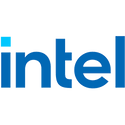
Intel Releases Curious Core i5-13490F SKU in the Chinese Market
Intel released a curiously-named Core i5-13490F desktop processor SKU in the Chinese market, in what is a sign that the company is optimizing its lineup to better square off against AMD's Ryzen 5 and Ryzen 7 "Zen 4" processors at highly competitive pricing. The i5-13490F is positioned in between the i5-13400F and the i5-13500. It has the same 6P+4E core-configuration as the i5-13400F, and not the 6P+8E configuration of the i5-13500; but comes with a larger shared L3 cache of 24 MB, compared to 20 MB on the i5-13400F. The P-cores still only get 1.25 MB of L2 cache a piece, and the E-core clusters each only get 2 MB of shared L2 cache. As an "F" SKU, it lacks integrated graphics. The clock-speeds see the P-cores at a maximum boost frequency of 4.70 GHz (compared to 4.60 GHz of the i5-13400F). A quick CPU-Z Bench run put the processor's performance at roughly 6% higher single-threaded score than the i5-13400F, and a roughly 4.5% higher multi-threaded score.
























































